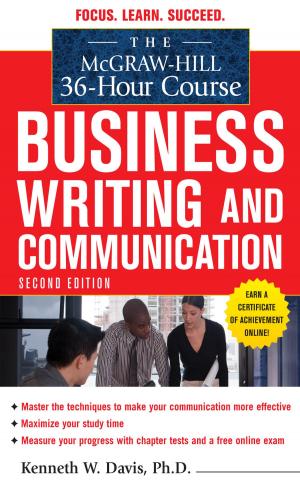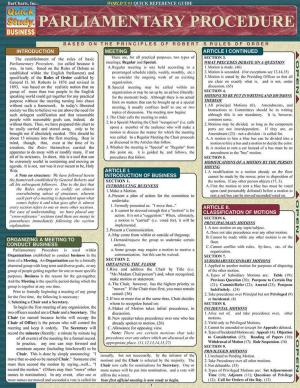Never Let 'Em See You Sweat
A Tranquilizer for Presenters
Business & Finance, Business Reference, Business Communication| Author: | Phil Slott | ISBN: | 9780991624102 |
| Publisher: | Black Ribbon Press | Publication: | April 17, 2014 |
| Imprint: | Language: | English |
| Author: | Phil Slott |
| ISBN: | 9780991624102 |
| Publisher: | Black Ribbon Press |
| Publication: | April 17, 2014 |
| Imprint: | |
| Language: | English |
Phil Slott started his career as a junior copywriter, and was so nervous when he had to present that he would have to pray on the floor of his studio apartment before meetings. Years later, as chairman of BBDO London, Slott was adept at holding an audience of hundreds in the palm of his hand, and is described as one of the masters of presentation. He created dozens of well-known campaigns. But, the two most famous ones are “It’s not just a job, it’s an adventure” for the US Navy and the unforgettable campaign for Gillette ("Never Let 'Em See You Sweat"). Finally there's a concise, detailed and humorous book written about how to overcome the anxieties that keep us from being effective presenters. In Never Let 'Em See You Sweat, Slott offers practical information on notes, outlines and props, and gives concrete advice on deflecting hecklers, interacting with the audience and using humor to engage your listeners. Slott gives the reader a One Minute Manager for people who have to make presentations. He prepares everyone from the novice to the veteran presenter with his 21 "Nevers" such as never say always, never be too positive, never get caught lying. There’s no fake motivational hype, just simple, easy-to-follow steps to becoming a more effective presenter. This book is for anybody who has to give presentations, whether it's for a small staff meeting or a large audience of 10,000 executives. An excerpt from the chapter “Never confuse public speaking with presentation” sets the stage. Public speaking and presentation are not the same thing. Public speaking may be talking the talk, but presentation is walking the walk. Public speaking is speaking well in public. Presentation is speaking well in public plus all the elements of showmanship. Most people would call Socrates, Abraham Lincoln, or George Will great presenters -- but they’re not. They were or are great public speakers. In the business setting, presentations are a ray of light in most people’s workday. People come to presentations to get away from the dull paperwork in their offices. They come to escape. They come for the show. As a result, the presenter must always live up to the audience’s expectations for entertainment. If you as a presenter don’t do this, you will soon be labeled a bore and suffer the consequences that go with that label. Skilled presentation involves acting, rehearsal, scenery, sound effects, and possibly music and lighting. A presentation may also call for the right make-up, hairstyle, useful props and aproposwardrobe. Public speaking only involves a few of these elements. Acting, rehearsal, timing and appearance are important to public speaking, but that’s where the similarity ends. Public speaking rarely involves cues, sound effects, scenery, music or lighting. The challenge of presentation starts where public speaking leaves off. Because presentation means “walking the walk,” it’s not surprising that some great presenters have made their mark on history. So, who have been the greatest presenters in history? We could debate the answer to that question forever, but my own choices are Alexander the Great, Adolf Hitler, Carl Sagan and Elizabeth Dole. Enjoy the read.
Phil Slott started his career as a junior copywriter, and was so nervous when he had to present that he would have to pray on the floor of his studio apartment before meetings. Years later, as chairman of BBDO London, Slott was adept at holding an audience of hundreds in the palm of his hand, and is described as one of the masters of presentation. He created dozens of well-known campaigns. But, the two most famous ones are “It’s not just a job, it’s an adventure” for the US Navy and the unforgettable campaign for Gillette ("Never Let 'Em See You Sweat"). Finally there's a concise, detailed and humorous book written about how to overcome the anxieties that keep us from being effective presenters. In Never Let 'Em See You Sweat, Slott offers practical information on notes, outlines and props, and gives concrete advice on deflecting hecklers, interacting with the audience and using humor to engage your listeners. Slott gives the reader a One Minute Manager for people who have to make presentations. He prepares everyone from the novice to the veteran presenter with his 21 "Nevers" such as never say always, never be too positive, never get caught lying. There’s no fake motivational hype, just simple, easy-to-follow steps to becoming a more effective presenter. This book is for anybody who has to give presentations, whether it's for a small staff meeting or a large audience of 10,000 executives. An excerpt from the chapter “Never confuse public speaking with presentation” sets the stage. Public speaking and presentation are not the same thing. Public speaking may be talking the talk, but presentation is walking the walk. Public speaking is speaking well in public. Presentation is speaking well in public plus all the elements of showmanship. Most people would call Socrates, Abraham Lincoln, or George Will great presenters -- but they’re not. They were or are great public speakers. In the business setting, presentations are a ray of light in most people’s workday. People come to presentations to get away from the dull paperwork in their offices. They come to escape. They come for the show. As a result, the presenter must always live up to the audience’s expectations for entertainment. If you as a presenter don’t do this, you will soon be labeled a bore and suffer the consequences that go with that label. Skilled presentation involves acting, rehearsal, scenery, sound effects, and possibly music and lighting. A presentation may also call for the right make-up, hairstyle, useful props and aproposwardrobe. Public speaking only involves a few of these elements. Acting, rehearsal, timing and appearance are important to public speaking, but that’s where the similarity ends. Public speaking rarely involves cues, sound effects, scenery, music or lighting. The challenge of presentation starts where public speaking leaves off. Because presentation means “walking the walk,” it’s not surprising that some great presenters have made their mark on history. So, who have been the greatest presenters in history? We could debate the answer to that question forever, but my own choices are Alexander the Great, Adolf Hitler, Carl Sagan and Elizabeth Dole. Enjoy the read.















